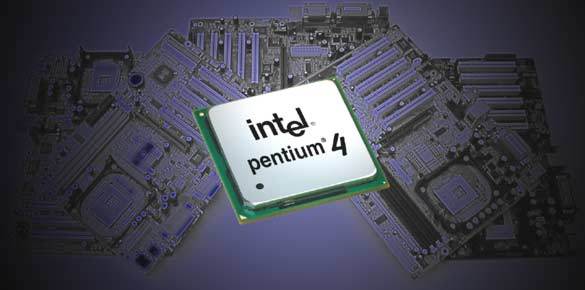The Economical Way to a Pentium 4 System: Five Motherboards with the SiS648 Chipset
Intel: Full Steam Ahead!
The chip giant seems to have gotten carried away with its strategy: because the Athlon processes faster than the Pentium 4 at the same clock speed, the clock speed had to increase as quickly as possible. Today, Pentium 4 processors work at speeds of up to 3.06 GHz and with 533 MHz FSB. But that's still not enough: dual-channel storage controllers and even faster system clock speeds (up to 200 MHz quad-pumped) are next. In addition, Intel is continuing to develop HyperThreading technology, which provides better allocation of the processor's capabilities and enhances utilization.
Going in another direction, AMD is concentrating on the 64 bit Athlon so that it can continue to be a player in the future. For several weeks, however, Athlon's top model (Athlon XP 2800+) has been getting less attention for its performance and more for its unavailability. Additionally, Athlon XP can only keep apace with the fastest Pentium 4 CPUs if it is combined with a high-caliber platform. We are referring to the nForce2 chipset by nVIDIA , which can work with dual-channel DDR333 or DDR400.
Load Balancing With HyperThreading
HyperThreading could be considered both a blessing and a curse. It's a curse for AMD in some benchmarks, which lose in performance. But it's a blessing for anyone who can afford a 3 GHz P4 and can therefore see the hidden advantages of multiprocessing, i.e. more parallelism through the use of the existing potential that has been misused until now. In the high-end range, however, HyperThreading offers real added value. And whoever doesn't want it can simply turn this function off in the computer's BIOS.
Get Tom's Hardware's best news and in-depth reviews, straight to your inbox.
Current page: Intel: Full Steam Ahead!
Prev Page Introduction Next Page HyperThreading: Which Boards To Use?
Patrick Schmid was the editor-in-chief for Tom's Hardware from 2005 to 2006. He wrote numerous articles on a wide range of hardware topics, including storage, CPUs, and system builds.
